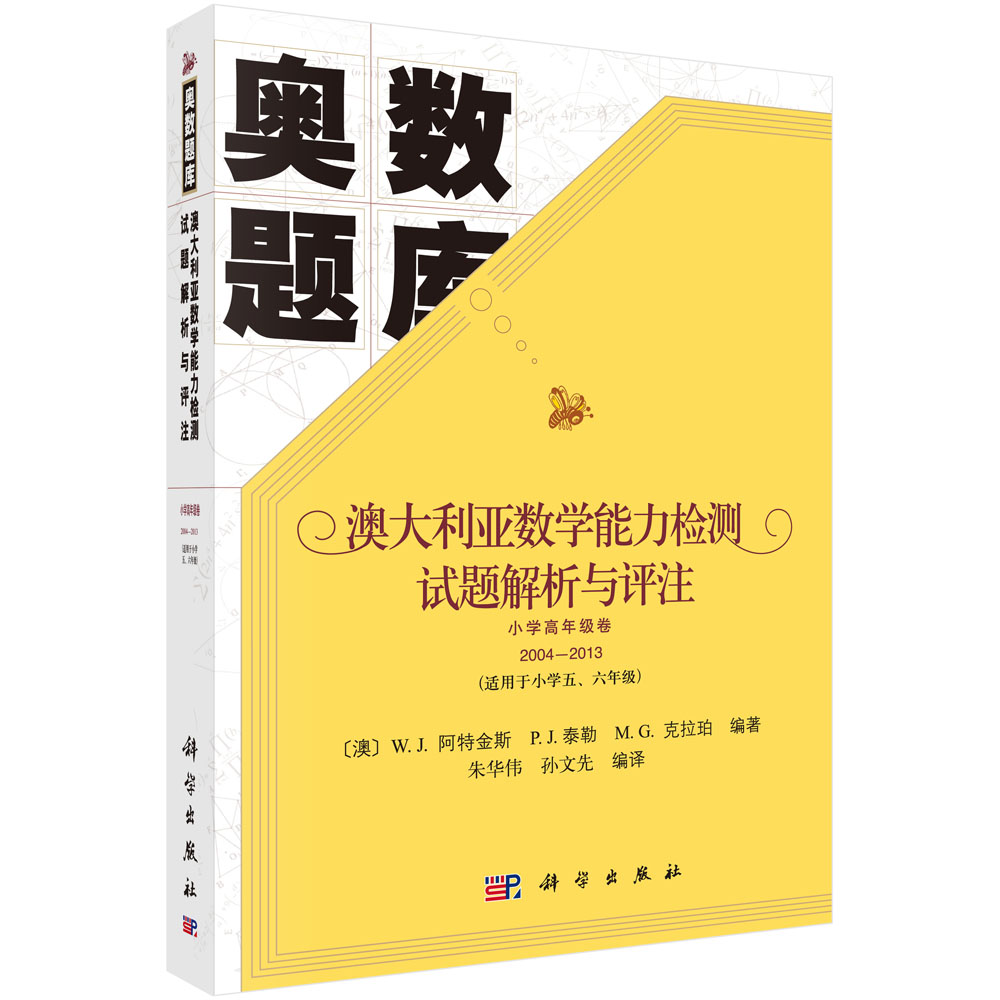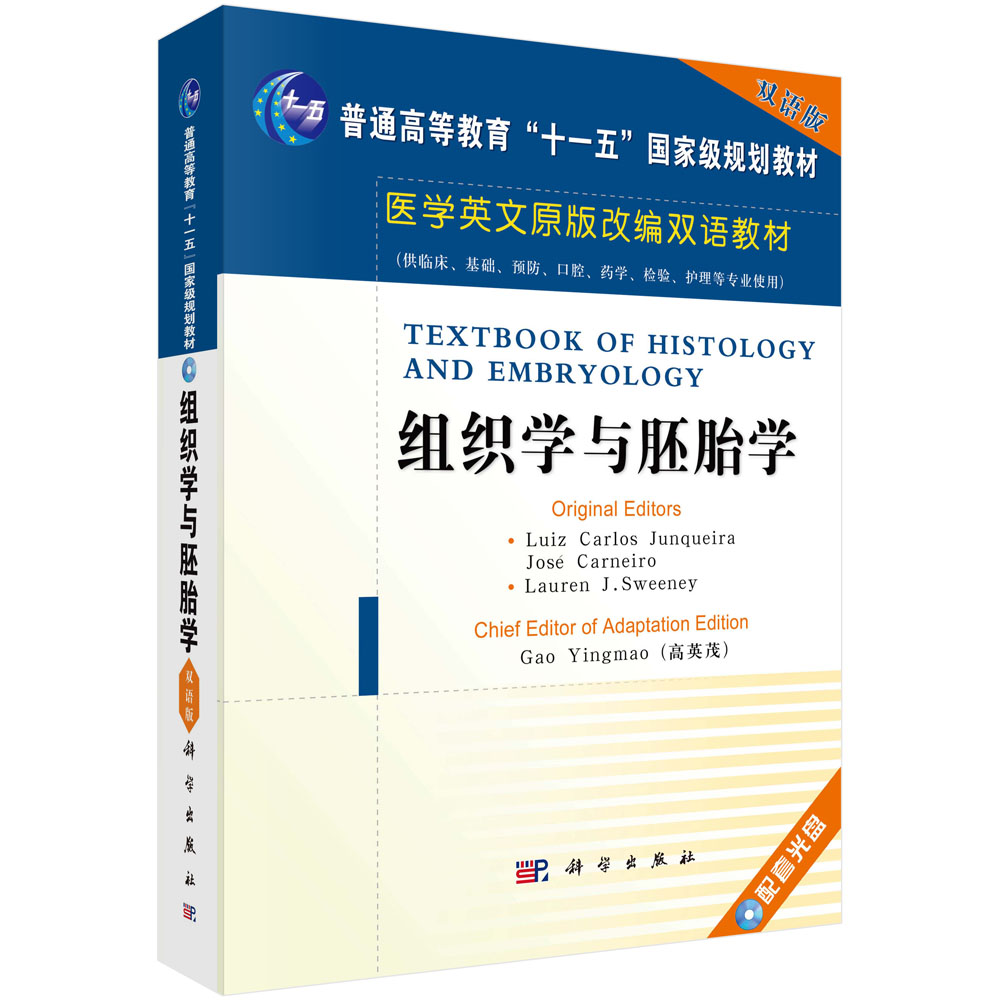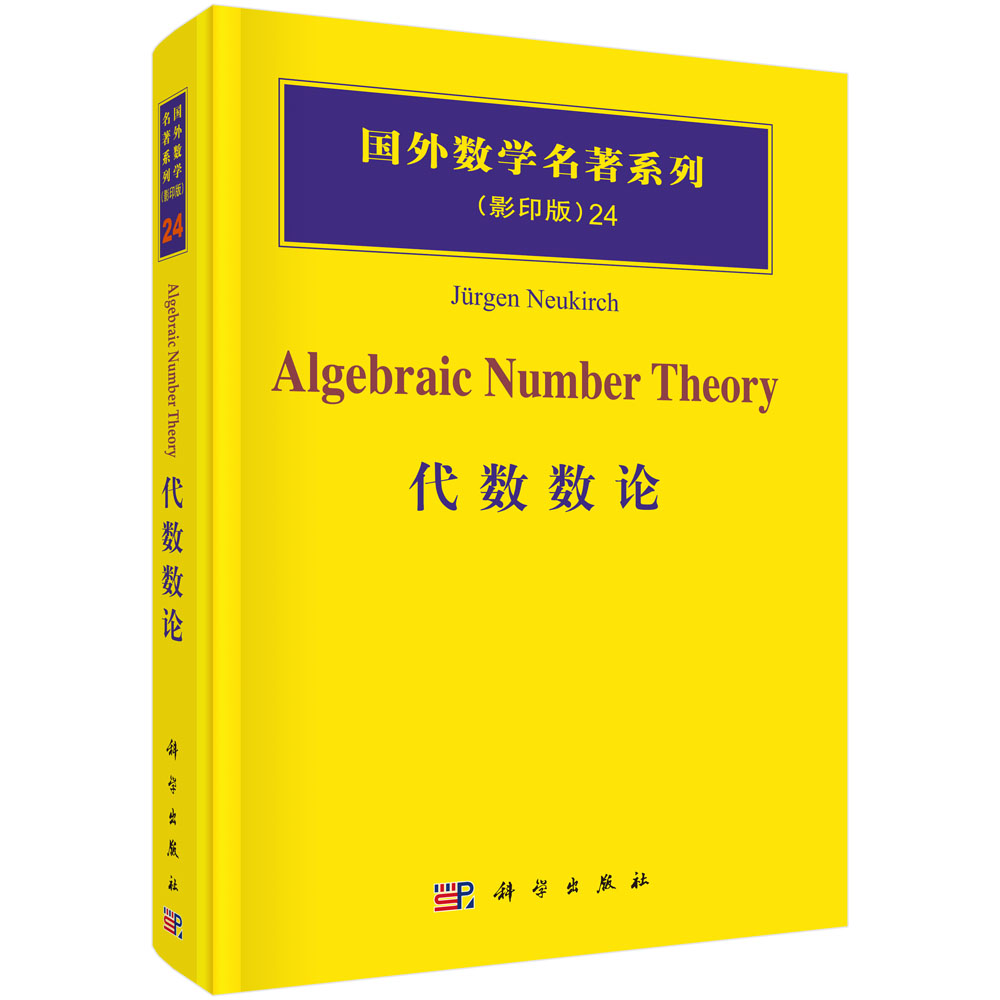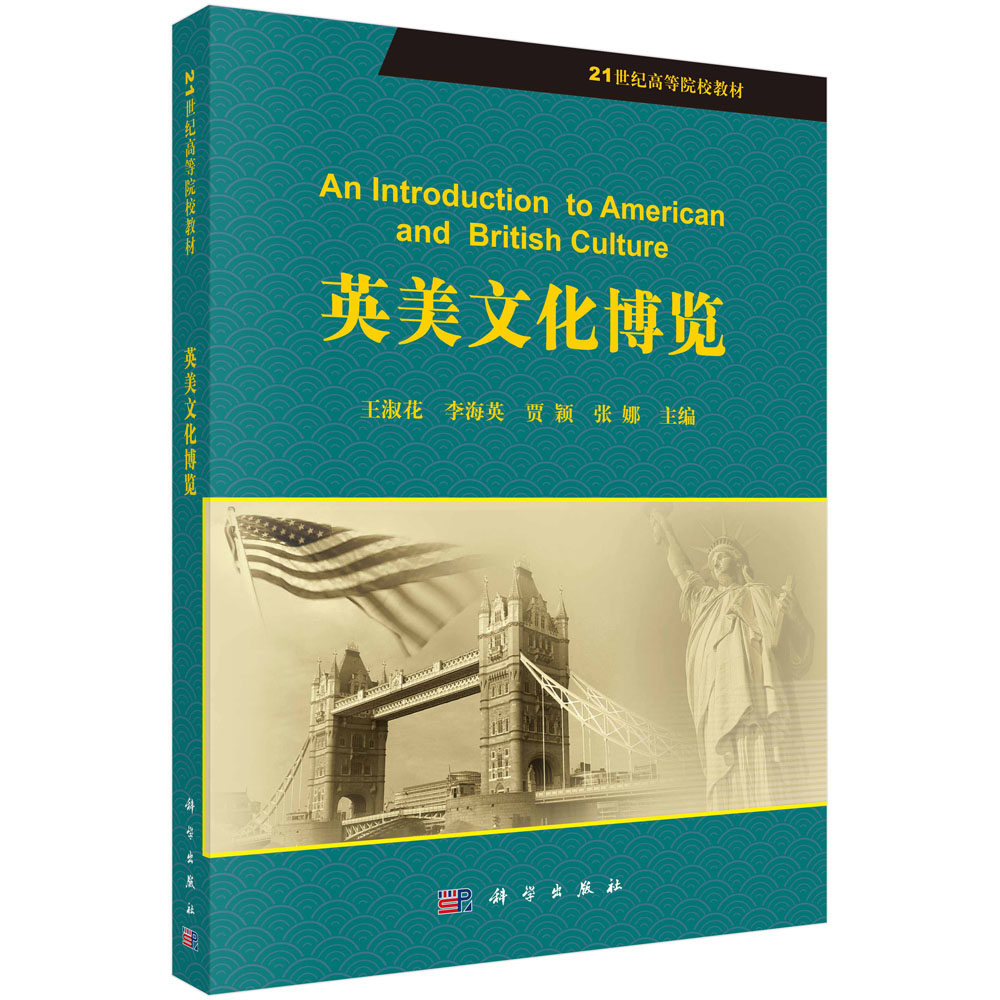理解磁的量子本性有助于新磁性材料的开发,这些材料可用于永磁体,传感器以及信息存储。要开发这些应用需要掌握基本的物理原理,如对称性破缺、序参量、激发、阻挫以及约化维度。本书从电磁学与量子力学的基本概念开始,合理地阐述了上述理论。书中概述了原子中磁矩的起源以及在晶体内部这些磁矩是如何受局域环境影响的,还介绍了磁矩间的各种不同类型的相互作用。最后几张专门论述金属的磁性和当竞争磁相互作用存在及体系具有约化维度时的复杂行为。
全书理论原理与实际应用相结合,充分讨论了实验技术以及当前研究的热点。本书包括一百多张插图以及一些关于基本原理的附录。
本书作者为牛津大学教授Stephen Blundell。
样章试读
目录
- 目录
1 引论 1
1.1 磁矩 1
1.1.1 磁矩与角动量 2
1.1.2 旋进 3
1.1.3 Bohr磁子 4
1.1.4 磁化强度与场 4
1.2 经典力学与磁矩 6
1.2.1 正则动量 7
1.2.2 Bohr-van Leeuwen定理 8
1.3 自旋的量子力学 9
1.3.1 轨道与自旋角动量 9
1.3.2 Pauli自旋矩阵与旋量 10
1.3.3 升降算子 12
1.3.4 二自旋的耦合 13
2 孤立磁矩 18
2.1 磁场中的原子 18
2.2 磁化率 19
2.3 抗磁性 20
2.4 顺磁性 23
2.4.1 顺磁性的半经典处理 23
2.4.2 J=1
2 的顺磁性 25
2.4.3 Brillouin函数 27
2.4.4 Van Vleck顺磁性 30
2.5 离子的基态与Hund规则 30
2.5.1 精细结构 31
2.5.2 Hund定则 32
2.5.3 L-S与j-j耦合 35
2.6 绝热去磁 36
2.7 核自旋 38
2.8 超精细结构 40
3 环境 45
3.1 晶体场 45
3.1.1 晶体场的起源 45
3.1.2 轨道猝灭 48
3.1.3 Jahn-Teller效应 50
3.2 磁共振技术 52
3.2.1 核磁共振 52
3.2.2 电子自旋共振 60
3.2.3 Mossbauer谱 65
3.2.4 μ子自旋旋转 68
4 相互作用 74
4.1 磁偶极相互作用 74
4.2 交换相互作用 74
4.2.1 交换的起源 74
4.2.2 直接交换 76
4.2.3 离子固体中的间接交换:超交换作用 77
4.2.4 金属中的间接交换 79
4.2.5 双交换作用 79
4.2.6 各向异性交换相互作用 81
4.2.7 连续统近似 82
5 序与磁性结构 85
5.1 铁磁性 85
5.1.1 铁磁体的Weiss模型 85
5.1.2 磁化率 89
5.1.3 磁场的作用 89
5.1.4 分子场的起源 90
5.2 反铁磁性 92
5.2.1 反铁磁体的Weiss模型 92
5.2.2 磁化率 93
5.2.3 强磁场的作用 94
5.2.4 反铁磁序的类型 96
5.3 亚铁磁性 97
5.4 螺旋序 99
5.5 自旋玻璃 100
5.6 核有序 101
5.7 磁序的测量 102
5.7.1 磁化强度与磁化率 102
5.7.2 中子散射 103
5.7.3 其他技术 107
6 序与破缺的对称性 111
6.1 破缺的对称性 111
6.2 模型 115
6.2.1 铁磁性的Landau理论 115
6.2.2 Heisenberg与Ising模型 116
6.2.3 一维Ising模型(D=1,d=1) 116
6.2.4 二维Ising模型(D=1,d=2) 117
6.3 破缺对称性的后果 117
6.4 相变 119
6.5 刚性 121
6.6 激发 121
6.6.1 磁子 122
6.6.2 BlochT3/2定律 124
6.6.3 Mermin-Wagner-Berezinskii定理 125
6.6.4 自旋波的测量 126
6.7 畴 127
6.7.1 畴壁 128
6.7.2 磁晶各向异性 128
6.7.3 畴壁宽度 129
6.7.4 畴形成 130
6.7.5 磁化过程 131
6.7.6 畴壁观测 132
6.7.7 小磁性粒子 133
6.7.8 Stoner-Wohlfarth模型 134
6.7.9 软与硬材料 135
7 金属中的磁性 140
7.1 自由电子模型 140
7.2 Pauli顺磁性 143
7.2.1 基本推导 143
7.2.2 与局域行为的交叠 144
7.2.3 实验技术 145
7.3 自发自旋分裂带 145
7.4 自旋密度泛函理论 147
7.5 Landau能级 148
7.6 Landau抗磁性 150
7.7 电子气体的磁性 153
7.7.1 电子气体的顺磁响应 153
7.7.2 电子气体的抗磁响应 156
7.7.3 RKKY相互作用 156
7.8 电子气体中的激发 157
7.9 自旋密度波 159
7.10 Kondo效应 161
7.11 Hubbard模型 161
7.12 中子星 162
8 竞争相互作用与低维度 166
8.1 阻挫 166
8.2 自旋玻璃 167
8.3 超顺磁性 170
8.4 一维磁体 171
8.4.1 自旋链 172
8.4.2 自旋子 172
8.4.3 Haldane链 173
8.4.4 自旋Peierls转变 173
8.4.5 自旋梯子 175
8.5 二维磁体 176
8.6 量子相变 178
8.7 薄膜与多层 180
8.8 磁-光学 182
8.9 磁电阻 183
8.9.1 铁磁体的磁电阻 184
8.9.2 各向异性磁电阻 185
8.9.3 巨磁电阻 185
8.9.4 交换各向异性 187
8.9.5 庞磁电阻 188
8.9.6 Hall效应 190
8.10 有机与分子磁体 191
8.11 自旋电子学 192
A 电磁学中的单位 194
B 电磁学 197
B.1 磁矩 197
B.2 自由空间中的Maxwell方程 198
B.3 自由与边界电流 199
B.4 介质中的Maxwell方程 200
B.5 边界条件 200
C 量子与原子物理学 202
C.1 量子力学 202
C.2 Dirac左矢与右矢记号 203
C.3 Bohr模型 204
C.4 轨道角动量 205
C.5 氢原子 206
C.6 g因子 207
C.7 d轨道 209
C.8 自旋轨道相互作用 210
C.9 Lande g因子 210
C.10 微扰理论 211
D 磁学中的能量与退磁化场 214
D.1 能量 214
D.2 退磁化因子 214
D.3 任意形状的铁磁体 216
E 统计力学 219
E.1 配分函数与热力学函数 219
E.2 均分定理 220
F 精选问题的答案与提示 222
G 符号?常数与实用方程 230
索引 234
Contents
1 Introduction 1
1.1 Magnetic moments 1
1.1.1 Magnetic moments and angular momentum 2
1.1.2 Precession 3
1.1.3 The Bohr magneton 4
1.1.4 Magnetization and field 4
1.2 Classical mechanics and magnetic moments 6
1.2.1 Canonical momentum 7
1.2.2 The Bohr-van Leeuwen theorem 8
1.3 Quantum mechanics of spin 9
1.3.1 Orbital and spin angular momentum 9
1.3.2 Pauli spin matrices and spinors 10
1.3.3 Raising and lowering operators 12
1.3.4 The coupling of two spins 13
2 Isolated magnetic moments 18
2.1 An atom in a magnetic field 18
2.2 Magnetic susceptibility 19
2.3 Diamagnetism 20
2.4 Paramagnetism 23
2.4.1 Semiclassical treatment of paramagnetism 23
2.4.2 Paramagnetism for J=1/2 25
2.4.3 The Brillouin function 27
2.4.4 Van Vleck paramagnetism 30
2.5 The ground state of an ion and Hund's rules 30
2.5.1 Fine structure 31
2.5.2 Hund'srules 32
2.5.3 L-S and j-j coupling 35
2.6 Adiabatic demagnetization 36
2.7 Nuclearspins 38
2.8 Hyperfinestructure 40
3 Environments 45
3.1 Crystalfields 45
3.1.1 Origin of crystal fields 45
3.1.2 Orbital quenching 48
3.1.3 The Jahn-Teller effect 50
3.2 Magnetic resonance techniques 52
3.2.1 Nuclear magnetic resonance 52
3.2.2 Electron spin resonance 60
3.2.3 Mossbauer spectroscopy 65
3.2.4 Muon-spinrotation 68
4 Interactions 74
4.1 Magnetic dipolar interaction 74
4.2 Exchange interaction 74
4.2.1 Origin of exchange 74
4.2.2 Direct exchange 76
4.2.3 Indirect exchange in ionic solids: super exchange 77
4.2.4 Indirect exchange in metals 79
4.2.5 Double exchange 79
4.2.6 Anisotropic exchange interaction 81
4.2.7 Continuum approximation 82
5 Order and magnetic structures 85
5.1 Ferromagnetism 85
5.1.1 The Weiss model of a ferromagnet 85
5.1.2 Magnetic susceptibility 89
5.1.3 The effect of a magnetic field 89
5.1.4 Origin of the molecular field 90
5.2 Antiferromagnetism 92
5.2.1 Weiss model of an antiferromagnet 92
5.2.2 Magnetic susceptibility 93
5.2.3 The effect of a strong magnetic field 94
5.2.4 Types of antiferromagnetic order 96
5.3 Ferrimagnetism 97
5.4 Helical order 99
5.5 Spin glasses 100
5.6 Nuclear ordering 101
5.7 Measurement of magnetic order 102
5.7.1 Magnetization and magnetic susceptibility 102
5.7.2 Neutron scattering 103
5.7.3 Other techniques 107
6 Order and broken symmetry 111
6.1 Broken symmetry 111
6.2 Models 115
6.2.1 Landau theory of ferromagnetism 115
6.2.2 Heisenberg andlsing models 116
6.2.3 The one-dimensionallsing luodel (D=1, d=1) 116
6.2.4 The two-dimensionallsing model (D=1, d=2) 117
6.3 Consequences ofbroken symmetry 117
6.4 Phase transitions 119
6.5 Rigidity 121
6.6 Excitations 121
6.6.1 Magnons 122
6.6.2 The Bloch T3/2 law 124
6.6.3 The Mermin-Wagner-Berezinskii theorem 125
6.6.4 Measurement of spin waves 126
6.7 Domains 127
6.7.1 Domainwalls 128
6.7.2 Magnetocrysrallineanisotropy 128
6.7.3 Domain wall width 129
6.7.4 Domainformation 130
6.7.5 Magnetizationprocesses 131
6.7.6 Domain wall observation 132
6.7.7 Small magnetic particles 133
6.7.8 The Stoner-Wohlfarth model 134
6.7.9 Soft and hard materials 135
7 Magnetism in metals 140
7.1 The free electron model 140
7.2 Pauliparamagnetism 143
7.2.1 Elementaryderivation 143
7.2.2 Crossover tolocalized behaviour 144
7.2.3 Experimentaltechniques 145
7.3 Spontaneously spin-split bands 145
7.4 Spin-density functional theory 147
7.5 Landaulevels 148
7.6 Landaudiamagnetism 150
7.7 Magnetism of the electron gas 153
7.7.1 Paramagnetic response of the electron gas 153
7.7.2 Diamagnetic response of the electron gas 156
7.7.3 The RKKY interaction 156
7.8 Excitations in the electron gas 157
7.9 Spin-densitywaves 159
7.10 The Kondo effect 161
7.11 The Hubbard model 161
7.12 Neutron stars 162
8 Competinginteractions andlow dimensionality 166
8.1 Frustration 166
8.2 Spinglasses 167
8.3 Superparamagnetism 170
8.4 One-dimensionalmagnets 171
8.4.1 Spinchains 172
8.4.2 Spinons 172
8.4.3 Haldanechains 173
8.4.4 Spin-Peierlstransition 173
8.4.5 Spinladders 175
8.5 Two-dimensionalmagnets 176
8.6 Quantum phase transitions 178
8.7 Thin films and multilayers 180
8.8 Magneto-optics 182
8.9 Magnetoresistance 183
8.9.1 Magnetoresistanceofferromagnets 184
8.9.2 Anisotropicmagnetoresistance 185
8.9.3 Giant magnetoresistance 185
8.9.4 Exchangeanisotropy 187
8.9.5 Colossalmagnetoresistance 188
8.9.6 Halleffect 190
8.10 Organic and molecular magnets 191
8.11 Spin electronics 192
A Units in electromagnetism 194
B Electromagnetism 197
B.1 Magnetic moments 197
B.2 Maxwell's equations in free space 198
B.3 Free and bound currents 199
B.4 Maxwell's equations in matter 200
B.5 Boundary conditions 200
C Quantum and atomic physics 202
C.1 Quantummechanics 202
C.2 Dirac bra and ket notation 203
C.3 The Bohr model 204
C.4 Orbital angular momentum 205
C.5 The hydrogen atom 206
C.6 The g-factor 207
C.7 d orbitals 209
C.8 The spin-orbit interaction 210
C.9 Landeg-factor 210
C.10 Perturbation theory 211
D Energyin magnetism and demagnetizing fields 214
D.1 Energy 214
D.2 Demagnetizing factors 214
D.3 A ferromagnet of arbitrary shape 216
E Statistical mechanics 219
E.1 The partition function and thermodynamic functions 219
E.2 The equipartition theorem 220
F Answers and hints to selected problems 222
G Symbols, constants and useful equations 230
Index 234









